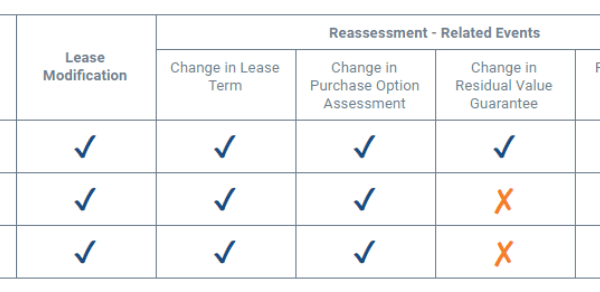What is an investment?
You have probably heard of stock investments, and the term “investment” may lead you to immediately envision stocks, bonds, and mutual funds. While this line of thinking is correct, accountants view investments as this and much more. Specifically, from an accounting perspective an investment is an asset acquired to generate income.
Investments can come in many forms. An example of a physical investment is a building purchased to be a rental property. The property is a fixed asset acquired for the purpose of providing rental income to the owner. Examples of nonphysical investment include the investment securities mentioned above but can also include derivatives or investments in companies.
How do you account for an investment?
When a company purchases an investment, it is recorded as a debit to the appropriate investment account (an asset), offset with a credit to the account representing the consideration (e.g., cash) given in exchange for the asset. After the initial recognition, the accounting gets a bit more complex. The changes in value, or “income” from an investment are accounted for in a myriad of different ways, many of which depend on what type of investment it is. This article will focus on the accounting treatment of intangible investments, specifically equity securities.
In 2016 the FASB issued ASU 2016-01, Financial Instruments—Overall (Subtopic 825-10): Recognition and Measurement of Financial Assets and Financial Liabilities (ASU 2016-01) to address the recognition, measurement, presentation, and disclosure of certain financial instruments. More specifically, ASU 2016-01 established ASC 321, Investments — Equity Securities (ASC 321) to present new accounting treatment for equity securities. Additionally, the previously existing standard, ASC 320, Investments — Debt Securities (ASC 320), was updated to provide accounting and reporting guidance only for investments in debt securities.
Prior to ASU 2016-01, both debt and equity securities were classified as held-to-maturity, available-for-sale, or trading and accounted for accordingly. This treatment is still in effect for debt securities under ASC 320, but the accounting for equity securities has changed.
What is an equity security?
An equity security is a financial instrument representing ownership in another entity. The most prevalent types of equity securities are common stock and preferred stock. The financial instrument is an investment in the entity’s net assets or equity. An investor will purchase the equity securities of an entity in hopes the entity will make a profit and in turn, the investment will appreciate.
How do you account for an equity security?
The various accounting treatments for equity securities are discussed in ASC 810, Consolidations (ASC 810), ASC 323, Investments – Equity Method and Joint Ventures (ASC 323), and ASC 321. The applicable accounting method is determined based on a number of factors, the most important of which are:
- The percentage of ownership the equity security represents
- The amount of control the investor can exercise over the entity
As indicated by the titles of the various accounting topics above, the three main methods of accounting for equity securities are:
- Consolidation
- Equity method
- Fair value
Consolidation
In the broadest sense, to consolidate means to combine. In accounting, consolidated financial statements combine the assets, liabilities, and other accounts of a group of entities to present them as a single entity. The purpose of consolidation is to report the aggregate financial position of the parent company (investor) to company stakeholders. Corporations or larger companies use consolidated financial statements to present the combined operating results of their entire business, but various departments, divisions, or subsidiaries may also have standalone, or individual financial statements.
Consolidation accounting
Consolidation accounting is governed by ASC 810. When a parent company has a controlling financial interest over a subsidiary (investee) company, the parent company will account for the investment, or ownership, in the subsidiary by consolidating, or combining their financial statements into one report. In general, a controlling financial interest means the parent owns more than 50% of the subsidiary. However, a parent company with a lesser ownership percentage may also have a controlling interest in another legal entity if they have significant control over key decisions and the right/obligations to significant income/loss of the investee.
Considerations for consolidation
Once the parent determines they have a controlling financial interest over another entity, the following criteria must also be considered to move forward with consolidation:
- The investment entity must be a legal entity (ASC 810 specifically excludes employee benefit plans, governmental organizations, certain investment companies, and money market funds.)
- Determine which consolidation model should be applied – the voting interest entity model or the variable interest entity model.
The voting interest entity model, or voting model, was established in the 1950s as guidance for consolidating entities whereby a controlling financial interest is presented primarily as ownership of the majority of voting rights. Over the years businesses and finances have become increasingly complex and, in the early 2000s, FASB introduced the variable interest entity (VIE) model and specific accounting guidance for its unique circumstances.
A VIE is a legal structure where the party with the controlling interest does not necessarily have the majority of the voting rights. If the voting model was used for consolidation in these cases, the controlling party, or primary beneficiary, would not be required to consolidate the subsidiary, which results in misleading consolidated financial statements. To address the situation the FASB developed the VIE consolidation model and a set of criteria to determine the appropriate accounting. The various criteria to identify a VIE and its primary beneficiary and guidance on applying the VIE model of consolidation are detailed in ASC 810. For the remainder of this article, the consolidation model we refer to is the voting interest model.
Accounting for the initial investment
The initial journal entry to record the parent’s investment under the voting interest model is to debit an investment asset account for the purchase price and credit cash or other account for the type of consideration exchanged. In addition, the parent records the assets and liabilities of the purchased subsidiary at fair value according to the guidance provided by ASC 805, Business Combinations (ASC 805). The parent company stops here if only presenting standalone financial statements. However, to present consolidated financial statements, which is required under ASC 810 when the parent has a controlling interest in a subsidiary, the parent company combines their financial statements with the financial statements of the purchased subsidiary.
To consolidate the entities, the parent company adds together the financial statements of both entities with a few adjustments:
- The non-controlling interest of the parent company is removed from the subsidiary’s financial statements (if applicable).
- The investment asset account of the parent and the remaining equity of the subsidiary are eliminated, or adjusted off of their respective financial statements.
- Any additional transactions between the parent and subsidiary, known as intercompany transactions, are eliminated, or adjusted off of their respective financial statements. Some common examples of these eliminations are intercompany receivables/payables and intercompany sales.
Non-controlling interest (NCI) is the amount of the subsidiary that the parent company does not own or control. (For example, if the parent company owns 80% of the subsidiary, 20% is the NCI or minority interest of that subsidiary.) For an accurate financial representation of the parent’s ownership of the subsidiary, the NCI is subtracted from the subsidiary’s financial position before consolidation.
On the balance sheet, NCI is presented as a separate line in the parent’s equity section, which represents the net assets or net financial position attributed to the subsidiary. The initial recognition of NCI occurs during the purchase accounting proscribed by ASC 805 when the fair value of the purchased assets and liabilities and the fair value of the NCI are recorded.
In addition, the amount of the investment balance recorded by the parent is removed from the parent’s financial statements and the offsetting equity balance is removed from the subsidiary’s financial statements as part of consolidation (step 2 above). Lastly, any intercompany transactions or balances are eliminated from the parent and subsidiary financial statements (step 3 above). After these adjustments, the consolidated financial statements include only the equity of the parent company, and the net investment in the subsidiary is represented by its assets and liabilities combined with the parent company’s assets and liabilities.
Accounting for subsequent activities
Changes in the amount of investment of the subsidiary, such as the parent purchasing additional shares of ownership or divesting some of their ownership, are accounted for by adjusting the investment asset. The NCI’s value changes due to the subsidiary’s profits and losses. These changes are presented on the parent company’s income statement as a separate line item. In addition, the parent company consolidates current financial statements from the subsidiary each financial period to include the subsidiary’s present financial position and results of operations in the consolidated financial statements.
The equity method
The equity method of accounting applies to an equity security investment if the investing entity does not have enough control over the investee to consolidate under ASC 810 but does have the ability to exercise significant influence over the investee’s operating and financial policies.
Accounting for the equity method
The Equity Method of Accounting for Investments and Joint Ventures under ASC 323 discusses the accounting treatment of investments under the equity method and includes illustrative examples of some of the transactions common to equity method accounting.
Fair value
Equity securities not meeting the consolidation criteria of ASC 810 or the equity method criteria for ASC 323 are accounted for using the fair value method described in ASC 321. The fair value method of accounting previously existed for equity securities, however under ASU 2016-01 and ASU 2018-03 Technical Corrections and Improvements to Financial Instruments – Overall (Subtopic 825-10): Recognition and Measurement of Financial Assets and Financial Liabilities (ASC 2018-03) the applicable accounting treatment was updated.
Accounting for the fair value method
Whereas previously an equity security was measured at fair value and any changes in fair value were recorded to other comprehensive income (OCI) or net income, depending on the classification of the security, currently an equity security under ASC 321 is measured at fair value and any changes are always recorded to net income. Additionally, ASC 321 provides for a measurement alternative if the fair value of the equity security is not readily determinable.
What is the measurement alternative?
The measurement alternative was first established in 2016 with ASU 2016-01 and the addition of ASC 321. The accounting treatment was introduced to improve accounting for certain financial assets and provides an accounting framework for valuing an equity security investment in the absence of a readily determinable fair value. Various accounting standard updates from 2016 through 2020 have continued to update and clarify the application of the measurement alternative. The most recent update is ASU 2020-01, Investments—Equity Securities (Topic 321), Investments—Equity Method and Joint Ventures (Topic 323), and Derivatives and Hedging (Topic 815): Clarifying the Interactions between Topic 321, Topic 323, and Topic 815 (ASU 2020-01) effective for fiscal year-ends starting after December 15, 2021.
Electing to apply the measurement alternative
The measurement alternative is only available for equity securities meeting both criteria:
- The fair value is not readily determinable fair value, and
- The net asset value per share (NAV) practical expedient outlined in ASC 820, Fair Value Measurement (ASC 820) section 10-35-59 is not an option.
The NAV practical expedient allows an equity security without a readily determinable fair value and which is an investment of certain investment companies or certain real estate funds to calculate its fair value as its NAV per share, without any additional adjustments. Furthermore, the election to apply the measurement alternative is made when the equity security is initially recognized or when an existing equity security is transferred from a previous accounting treatment to accounting treatment under ASC 321.
Accounting for the measurement alternative
Once the measurement alternative is elected, the initial recognition of the equity security is recorded at cost, which generally equates to its fair value. Subsequently, the investment is measured at cost less any impairment loss and adjusted to fair value if observable price changes occur to an identical or similar security from the same issuer. The price changes are considered observable if they occur in an orderly transaction.
An orderly transaction is a defined term within ASC 820 meaning the hypothetical sale occurs in a principal market in a standard length of time in a regular negotiation, as opposed to a distress sale or liquidation. Adjustments are recorded as of the date the observable price change occurred, the measurement date. At any time an entity can elect to apply the fair value method of accounting going forward. However after the decision has been made to opt out of the measurement alternative, an entity can not go back to this valuation method.
Summary
As complex as investing can be, investment accounting can oftentimes be even more challenging. The evolving world of finance has taken financial accounting along with it and accounting treatment options are available for a myriad of investment types and circumstances. Specifically, investment in the equity of another entity can be accounted for by three different methods, determined in part by the percentage of ownership and the amount of control the investor has over the investee.
At the highest level of ownership and control, a parent company consolidates the subsidiary under the appropriate consolidation model. When the investor does not control the investee, but still has significant influence over financial and operational decisions, the investment is accounted for under the equity method. Finally, when an investor owns an equity investment in an entity that can neither be consolidated nor qualifies for the equity method of accounting, the investor applies one of the valuation frameworks described in ASC 321.



